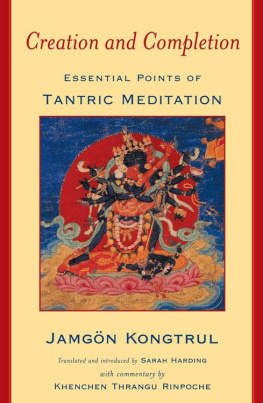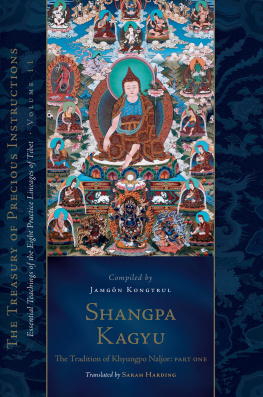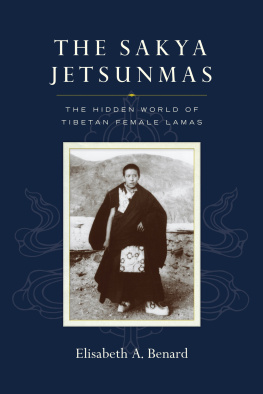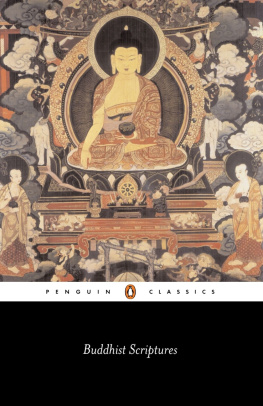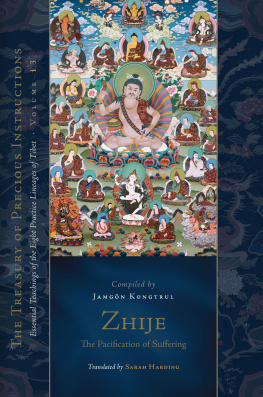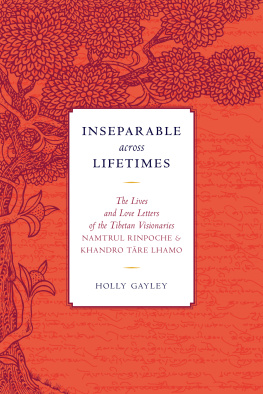NIGUMA, LADY OF ILLUSION
THE TSADRA FOUNDATION SERIES
published by Snow Lion Publications
Tsadra Foundation is a U.S.-based nonprofit organization that was founded in 2000 in order to support the activities of advanced Western students of Tibetan Buddhism, specifically those with significant contemplative experience. Taking its inspiration from the nineteenth-century nonsectarian Tibetan scholar and meditation master Jamgn Kongtrl Lodr Tay, Tsadra Foundation is named after his hermitage in eastern Tibet, Tsadra Rinchen Drak. The Foundations various program areas reflect his values of excellence in both scholarship and contemplative practice, and the recognition of their mutual complementarity.
This publication is part of Tsadra Foundations Translation Program, which aims to make authentic and authoritative texts from the Tibetan traditions available in English. The Foundation is honored to present the work of its fellows and grantees, individuals of confirmed contemplative and intellectual integrity; however, their views do not necessarily reflect those of the Foundation.
Tsadra Foundation is delighted to ally with Snow Lion Publications in making these important texts available in the English language.
NIGUMA,
LADY OF ILLUSION

Sarah Harding
SNOW LION PUBLICATIONS
ITHACA, NEW YORK
Snow Lion Publications
P.O. Box 6483
Ithaca, New York 14851 USA
(607) 273-8519 www.snowlionpub.com
Copyright 201o Tsadra Foundation
All rights reserved. No portion of this book may be reproduced by any means without prior written permission from the publisher.
Printed in USA on acid-free recycled paper.
ISBN-10: 1-55939-361-0
ISBN-13: 978-1-55939-361-4
Library of Congress Cataloging-in-Publication Data
Harding, Sarah, 1951
Niguma, lady of illusion / Sarah Harding.
p. cm. (The Tsadra Foundation series)
Includes translations from Tibetan.
Includes bibliographical references and index.
ISBN-13: 978-1-55939-361-4 (alk. paper)
ISBN-10: 1-55939-361-0 (alk. paper)
1. Niguma, 10th/11th cent. 2. as-pa (Sect)Doctrines.
I. Niguma, 10th/11th cent. Works. English. 2010. II. Title.
BQ7950.N557H37 2010
294.3'923dc22
2010015861
The print edition of this book was designed and typeset by Gopa & Ted2, Inc.
Prayer to the Gurus of the Shangpa Lineage
by Tenga Tulku Rinpoche
Vajradhara, Niguma, Sukhasiddh, Rhula,
Vajrsana, great adept Maitrpa,
And Hidden Yogin Rhula:
I supplicate the six sublime gurus.
Crown jewel of learned adepts, sublime Khyungpo Naljor,
Mokchokpa and Wntn Kyergangpa,
Sangye Nyentn Chkyi Sherab and
Sangye Tnpa Tsndru Senge:
I supplicate the lineage of seven jewels.
Nurtured by the sublime glorious guru
In this life and in all future lives,
Through the consummate realization of Five Golden Dharmas
May I gain the original sovereign state in one lifetime.
Preface
T HE MYSTERIOUS NIGUMA was an Indian woman from Kashmir who probably lived in the tenth and eleventh centuries. Not only are the dates uncertain, but so too is almost everything about her. I will explore what there is to know and not to know about Niguma in the introduction. What does stand firmly as testimony to her existence, however, is her legacy of teachings, which form the very core of the Shangpa Kagyu lineage, one of the Eight Great Chariots of the Practice Lineages that were later identified as the main conduits through which experiential Buddhism spread from India to Tibet.
The collection translated here consists of all of the works that are attributed to Niguma contained in the Tibetan Buddhist canon, a total of seventeen separate texts, plus the only known biography from the collected texts in the Shangpa tradition. Most of these are only a few pages in length, though their original verses gave rise to a whole body of literature in the Shangpa practice tradition. The exception is her master work, the Stages in the Path of Illusion (sGyu ma lam gyi rim pa), and its commentary (sGyu ma lam gyi rim pai grel pa). This is our main focus here, though the other texts will be briefly introduced.
Stages in the Path of Illusion depicts a spiritual journey, beginning with the point of departure, or groundthe underlying buddha-nature with its inherent potential for awakening. It takes us through the progressive journey common to Mahyna Buddhism, but with Nigumas distinctive twist of using the journeys illusory nature as our guide. That it is illusion is not in question. The crucial instruction is in the way to engage that insight to gain the goal of the journey, illusory buddhahood.
It could be said that Niguma is the mistress of illusion. Not only is her very nature as a historical person obscure in every way and her main and only treatise focused on that subject, but the other teachings for which she is most famous also reverberate with this theme. The two principal areas of practice in the tradition are the yogas based on the Six Dharmas of Niguma, with an emphasis on the illusory body and dream yogas, and the special Amulet Mahmudr, a practice of doing nothing. This twofold division of teachings represents the two universal approaches in tantric practice: the path of methods or techniques (thabs lam) and the path of liberation (grol lam), which focuses on the cultivation of a superior way of knowing (shes rab). The original verses or vajra lines (rdo rje tshig rkang) of these subjects are translated here. In the first category there are also five very cryptic instructions (zhal gdams) concerning yogic exercises associated with the practice of inner heat (gtum mo), one of the six dharmas. The mahmudr category includes an annotated version of the Amulet Mahmudr and a further instruction entitled Naturally Free Mahmudr.
Two other very important source texts of Niguma in this collection are Three Dharmas to Integrate on the Path (lam khyer gsum), which instruct the practitioner on how to integrate all appearances as the guru, the deity, and illusion in daily life, and Glorious Immortal Great Timeless Awareness, which contains teachings on the immortal and infallible nature of the mind and body. a practice that does not currently form part of the core Shangpa tradition. I will provide more context for the Shangpa literary and practice tradition in the introduction.
The collection is capped off by the lyrical prayer known popularly as Nigumas Aspiration Prayer of the Sealed Word or simply Kagyama (bKa rgya ma), in which she prays to become the protector, hope, and reinforcement for all sentient beings equaling space, their every desire and hope, whatever they are, satisfied by me exactly as they wish.
I would like to add my own altruistic aspirations, otherwise stranded in the realm of wishful thinking, to be carried by Nigumas powerful blessing so that the work of translating her teachings will help accomplish her profound prayer.
Acknowledgments
I AM MOST GRATEFUL for help and comments by crya Lama Tenpa Gyaltsen in translating the Stages in the Path of Illusion and its commentary. We studied every word of it together. His knowledge and enthusiasm for the path-system in the mahyna tradition was indispensable. And thats not to even mention the help with Tibetan itself! Khenpo Tsering Gyurme of Surmang Dudtsitil Monastery worked valiantly for many months searching for the quotations, often reading whole stras by the dozen. I dont think any database will ever replace the Tibetan lamas training in memorization and reading. Khenpo Tse-ring also made himself available at the drop of a hat for any questions regarding my research. I thank both of these lamas for their benevolent support. Some friends and colleagues helped by reading the manuscript and offering suggestions: Erin McCartney for a first reading of the introduction, Anne Blasing for a second, Steven Johnson for detailed cross-checking, and Robert Spellman for one final reading with an eye for style (who knew you were such a grammar nerd?). Lama Drupgyu, my friend and colleague in the three-year retreat and himself once a retreat master, helped to retrieve my long dormant memories of yogic exercises. We should all be grateful that someone remembers such things. I am also grateful for other friends that are now working under the auspices of the Tsadra Foundation, such as Ngawang Zangpo, Cyrus Stearns, Karl Brunnhlzl, and Richard Barron. Thank you for keeping in touch and adding to my knowledge when needed, which was often enough. Thanks go to graduate students Cory Leistikow and Daniel Garbes for help with entering the Tibetan fonts, and to my entire 2008 Tibetan IV class at Naropa University for sharing my translation travails. Certainly I thank Sidney and Jeff at Snow Lion Publications for all of their work, and Michael Wakoff, who had the terrible task of copyediting. Thank you to my good friend, Bhutanese master artist Phurba Namgay, for the Niguma tangkha shown on the cover. Above all, I wish to express my deep gratitude to Eric Colombel, founder and director of Tsadra Foundation. If not for you...
Next page


